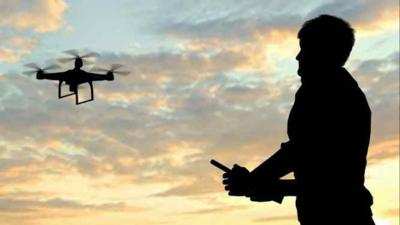Tue, May 02, 2017
Looked At 30 Incidents That Resulted In Some Kind Of Legal Action
Bard College has released a report looking at 30 instances where a drone was involved in an incident that led to some kind of legal or disciplinary action against the operator.

The incidents covered by by study have been divided into six categories: invasion of privacy, drone use, smuggling, close encounters with manned aircraft, crashes, and shoot downs. The survey found that similar drone infractions often appear to yield a wide variety of legal outcomes. In a small number of cases, drone operators have been charged using recently adopted drone-specific state and local statutes, but in a majority of cases, general charges—such as reckless endangerment and unlawful surveillance—have been applied. There appears to be little consistency in how, and by whom, infractions involving drones are prosecuted.
According to a recent study but the college, at least 130 localities in the U.S. have their own local drone rules, which in many cases extend beyond the rules implemented by the FAA. Therefore, when drone users are subject to local enforcement actions, these actions may stem from a range of different statutes, depending on where the incident took place.
The survey found that few cases involving drones have resulted in hard convictions, and only two cases have led to jail time for the operators (a drone crash case in Washington State and a drone smuggling case in Maryland), though a number of cases stemming from serious incidents remain ongoing. In a number of cases, particularly privacy related cases and close encounter cases, law enforcement agencies have been unable to identify and charge the operators. Since drones can be operated remotely, the most significant challenge to law enforcement may simply be finding the operators who are involved in incidents.
The authors of the report conclude that there have not yet been enough incidents and enforcement cases to draw broad generalized conclusions about how drone use is enforced in this country, and how it is likely to be enforced in the coming years. It is hard to tell whether the patterns we have observed are a function of the country being at an early stage of the integration process or whether they stem from the intrinsic nature of drone use. Nevertheless, it is hoped that the survey will spur further research to guide the development of policies that could enable law enforcement at both the federal and local levels to more effectively and fairly ensure that U.S. skies remain safe.
(Image from file)
More News
Aero Linx: Aviators Code Initiative (ACI) Innovative tools advancing aviation safety and offering a vision of excellence for aviators. The ACI materials are for use by aviation pra>[...]
Make Sure You NEVER Miss A New Story From Aero-News Network Do you ever feel like you never see posts from a certain person or page on Facebook or Instagram? Here’s how you c>[...]
From 2016 (YouTube Edition): Who You Gonna Call When You Have a Rocket Engine that Needs a Spacecraft? While at EAA AirVenture 2016, ANN CEO and Editor-In-Chief, Jim Campbell, sat >[...]
"In my opinion, if this isn't an excessive fine, I don't know what is... The odds are good that we're gonna be seeking review in the United States Supreme Court. So we gotta muster>[...]
Expedite Used by ATC when prompt compliance is required to avoid the development of an imminent situation. Expedite climb/descent normally indicates to a pilot that the approximate>[...]
 ANN's Daily Aero-Linx (04.30.25)
ANN's Daily Aero-Linx (04.30.25) ANN FAQ: Turn On Post Notifications
ANN FAQ: Turn On Post Notifications Classic Aero-TV: Agile Aeros Jeff Greason--Disruptive Aerospace Innovations
Classic Aero-TV: Agile Aeros Jeff Greason--Disruptive Aerospace Innovations Aero-News: Quote of the Day (04.30.25)
Aero-News: Quote of the Day (04.30.25) ANN's Daily Aero-Term (04.30.25): Expedite
ANN's Daily Aero-Term (04.30.25): Expedite



